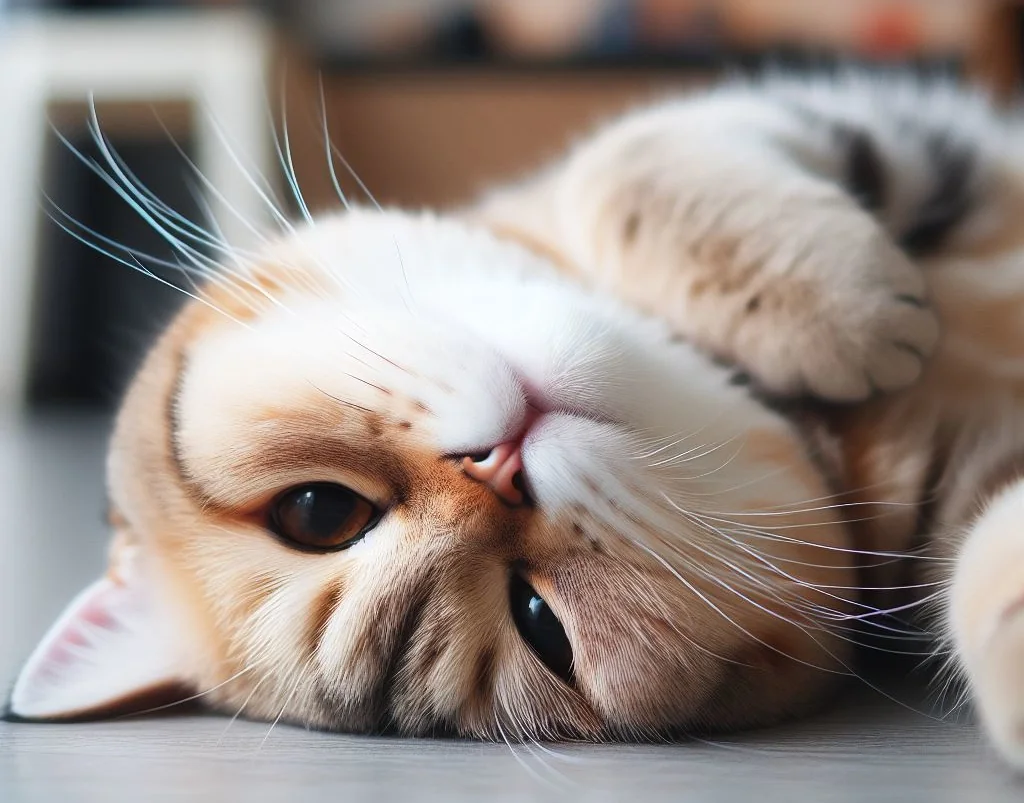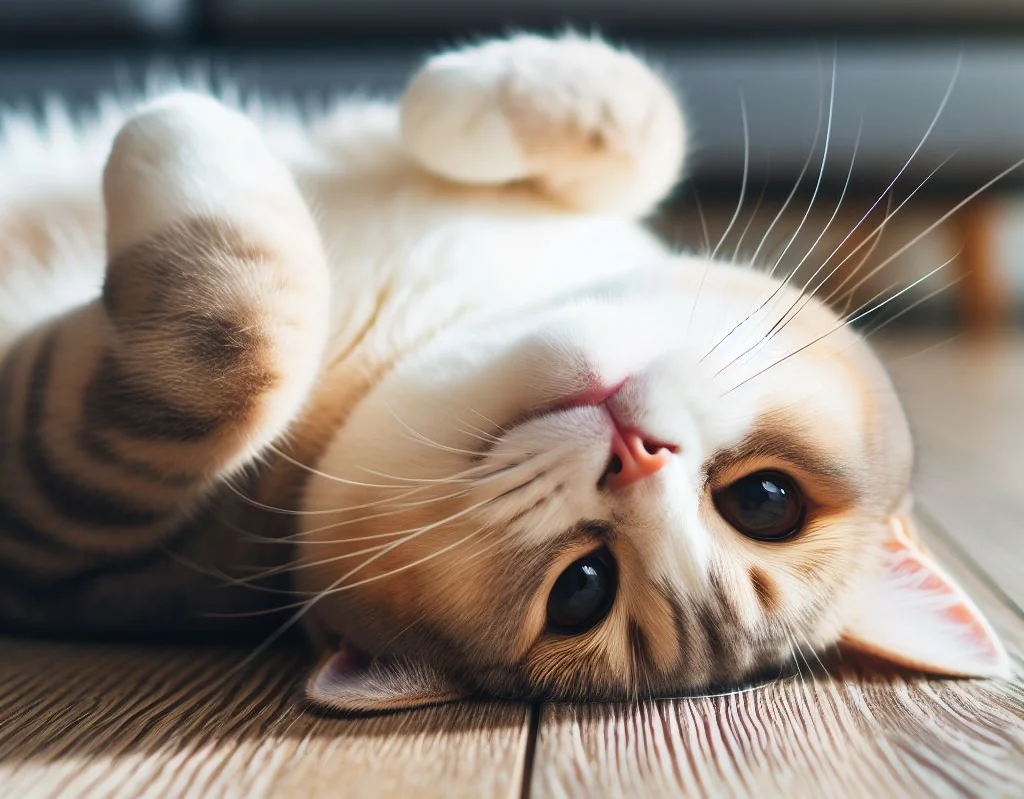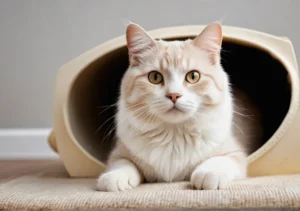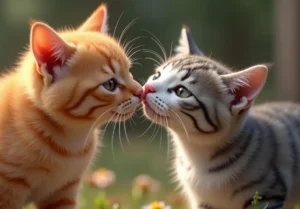If you’ve ever found yourself pausing a binge-watch session to ask, “Why is my cat performing acrobatics on the living room floor?”, you’re not alone. Cats’ quirky behaviors are part of their charm, but sometimes they leave us scratching our heads in bewilderment.
By reading this blog post, you’ll understand the fascinating reasons behind your feline friend’s floor gymnastics and how you can enhance their well-being through this adorable behavior.
Quick Takeaways:
- Rolling on the floor can signal contentment, territory marking, or attention-seeking; watch their body language for clues.
- Consider a vet check if rolling is excessive, paired with vocalizations, or exhibits other concerning signs.
- Encourage happy rolling by setting up a soft, designated area and incorporating toys or catnip to engage them.
Is It a Sign of Happiness?
When you see your cat rolling around on the floor, it’s easy to wonder what’s going through their furry little head. More often than not, this behavior is a hefty paw-print stamp of contentment. Cats feel safe and secure in their environment when they expose their belly, a vulnerable area, in such a carefree manner. This form of body language screams, “I’m happy, comfortable, and I trust you!”
To understand if your cat’s rolling is indeed a sign of joy, observe the context and other body language cues. For example, a cat lying on its back, purring, with its paws curled up and eyes half-closed, is in a state of bliss. However, if your cat adopts this position and then quickly moves to a defensive posture, this could indicate overstimulation rather than pure happiness.
Could It Be a Marking Behavior?
Interestingly, your cat’s rolling antics might also serve a functional purpose: marking territory. Cats possess scent glands in their cheeks, paws, and flanks, which release pheromones—chemical markers invisible to us but a billboard advertisement to other felines. By rubbing these parts of their body on the floor, they’re letting other cats know, “This place is mine!”
For a deeper dive into feline marking behaviors, The Humane Society of the United States offers a wealth of resources. They discuss how cats use scent marking as a way to communicate with other cats and manage their social environment. This action isn’t just for the outdoors; indoor cats also feel the urge to stake their claim.
When you notice this behavior, take a moment to see if it’s targeted. Does your cat roll in specific areas or on certain objects? This could be a sign they’re marking something particularly important to them in their indoor territory.
Is My Cat Trying to Get My Attention?
Yes, absolutely! Cats are often portrayed as aloof, but they have their ways of engaging with us, seeking attention, and asking for playtime or cuddles. Rolling on the floor might be your cat’s version of saying, “Hey, look at me!”
Here’s how you can tell if your cat’s trying to grab your attention:
- They roll and then fix their gaze on you, waiting for a reaction.
- The rolling is followed by an immediate action geared towards you, such as walking over for a cuddle or leading you to their food bowl.
- It happens more frequently when you’re around and could be accompanied by vocal cues.
Responding positively to these signals can strengthen your bond. Try engaging in a gentle play session with a toy they enjoy or a soft petting session, especially if they’re in a mood for cuddles. However, it’s crucial to recognize when your cat has had enough, as pushing interaction beyond their comfort zone can foster negative feelings.
Unique Insight: One often overlooked behavior during these rolling sessions is the immediate environment’s effect on your cat’s actions. For example, if you’ve recently used a new cleaning product or introduced a new rug or furniture, your cat might be rolling more frequently in response to these changes. They could either be trying to get comfortable with the new scents and textures or attempting to overlay their scent. Observing changes in their rolling behavior in response to changes in their environment provides deep insights into how cats interact with their world.
In summary, your cat rolling on the floor can mean a variety of things, from showing happiness and marking territory to seeking attention. By paying attention to the context and their other behaviors, you can get a better understanding of what your feline friend is trying to communicate.

Could There Be a Medical Reason?
While seeing your cat roll around on the floor can be a cute and entertaining display of feline exuberance, it’s important to recognize when this behavior might be signaling something more serious. After all, our furry friends can’t exactly tell us when something’s wrong, so it’s up to us to read the signs.
Excessive rolling, especially if accompanied by vocalizations or attempts to scratch certain areas, could be an indication of an underlying health issue. Be on the lookout for additional symptoms such as loss of appetite, lethargy, or unusual aggression, as these could be red flags warranting a veterinary consultation. A few conditions that might cause an uptick in rolling behavior include skin allergies, external parasites (like fleas or ear mites), or even discomfort from gastrointestinal issues.
When to consult a veterinarian:
– If the rolling seems compulsive and incessant
– Accompanied by vocalizations or scratching
– When other symptoms like lethargy, loss of appetite, or aggression appear
It’s always better to err on the side of caution. A quick vet visit can either give you peace of mind or catch a potentially serious issue early on.
How Can I Support My Cat’s Rolling Habit?
Now, assuming all is well health-wise, there’s plenty of room to support your kitty’s joyous rolling! Not only is it a pleasure to watch, but it also contributes to your cat’s physical and emotional well-being. Here’s how you can create a safe and enjoyable environment for this adorable behavior:
- Create a designated rolling area: Find a spot in your home where the flooring is soft and comfortable. Lay down a cat-friendly rug or mat that captures their scent, making it a familiar place they’ll love to return to. This simple act acknowledges their behavior and provides a safe space for them to revel in it.
- Interactive play: Combine their love for rolling with playtime. Toys that encourage rolling, such as balls or motorized mice, not only stimulate their prey drive but also support this natural behavior. This engagement provides mental stimulation and helps strengthen your bond.
- Introduce catnip or silver vine: Sprinkle some catnip or silver vine on their favorite rolling spot. Known for provoking an ecstatic reaction in many cats, these herbs can make rolling an even more blissful experience. Just be aware that not all cats are responsive to catnip, and it’s always advisable to introduce anything new in moderation.
Unique Insight:
Consider the temperature of your home. Cats often roll on cool surfaces to regulate their body temperature, especially during hotter months. Placing a cooling mat designed for pets in their favorite rolling spot can provide extra relief on warm days, a unique tip that’s often overlooked.
Remember, every cat is an individual with unique preferences. While some might prefer a quiet corner for their rolling escapades, others might want to roll right in the middle of the living room where they can be the center of attention. Observing your cat’s preferences and being attentive to their needs is key to supporting their behavior in a way that enriches their lives.
By creating a supportive environment for your cat’s rolling, you’re not just indulging their whims—you’re playing an active role in their physical and mental health. It’s these small, considerate actions that make a big difference in the life of our feline companions.
Alex, a passionate animal lover, has experience in training and understanding animal behavior. As a proud pet parent to two dogs and three cats, he founded AnimalReport.net to share insights from animal experts and expand his knowledge of the animal kingdom.





